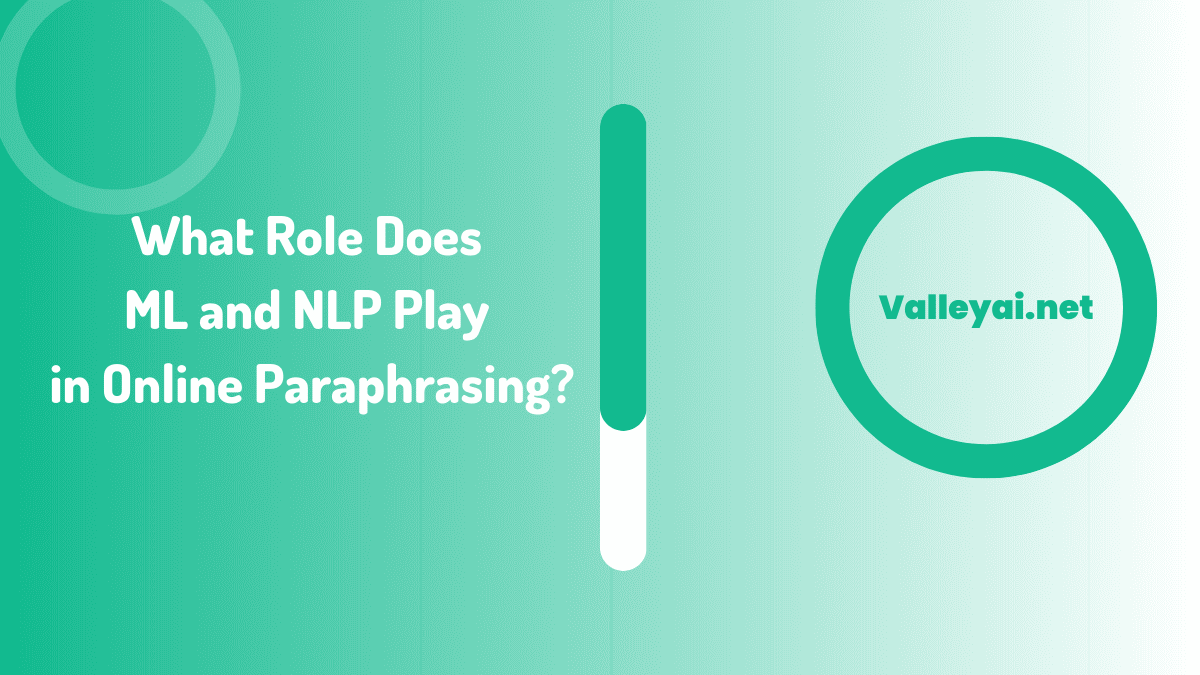ML and NLP are two popular technologies that are used in online paraphrasing tools. You may have seen some tools boasting about how their paraphrasing process incorporates ML and NLP for accurate results.
If you don’t know what that means, don’t worry. We will clear it all up for you here in this post.
What are ML and NLP?
Let’s take a look at what NLP and ML are.
1. What is ML?
ML stands for machine learning. Machine learning is basically the field of AI that involves training computer software to learn from the inputs they are provided. In other words, computer software that is equipped with ML is able to improve itself over time, and they are able to enhance the quality of its outputs.
Read also: How did computers change the world
A very common example of ML is in the predictive text seen on most smartphone
keyboards. When you use the keyboard for a while, the predictions get tuned to your
writing habits. It then starts to offer you suggestions according to what you typically type.
2. What is NLP?
NLP stands for natural language processing. This is basically the technology that allows computers to understand and process natural languages such as the ones spoken by humans in their everyday conversations.

For context, computers can’t really understand natural languages. They understand their
instructions in the form of 1’s and 0’s. Now, to make a binary machine like this understand the stuff you tell it in a natural language, you need to make use of NLP.
For example, once a computer is equipped with NLP, it will be able to understand languages like English and German, etc.
Read also: ML and NLP Difference
What Role Do These Two Technologies Play in Online Paraphrasing?
Now that we’re done looking at what these technologies are, let’s take a look at the role they play in online paraphrasing tools.
NLP: NLP plays a simple enough role in online paraphrasing. It is the technology that
allows paraphrasing tools to understand the content they are given, after which they can
move on to make changes accordingly.
Even in very simple tools, NLP plays a pivotal role since it allows the tool to understand the meaning of the words it wants to change.
For example, in the screenshot below, you can see that the paraphrasing tool has swapped out some of the words with their synonyms. How does it do that? It first understands the
content and then looks for synonyms that match its meaning.

What Role Do These Two Technologies Play in Online Paraphrasing?
ML: Moving on, let’s discuss what ML does in this whole business.
Paraphrasing tools receive a lot of input all the time, and they have to process different
types of content day in and day out. When these tools are equipped with ML, they are able to learn from the provided inputs so that they can improve the overall quality of their
results.
A paraphrasing tool that is equipped with ML will be able to get better the more it is used.
Of course, other than the input and output, there is a range of other stuff that plays a role in helping the tools learn. A particular tool may be programmed to constantly learn from a particular database, etc.
In the context of online paraphrasing tools, topic modeling is a powerful technique that leverages machine learning and natural language processing to uncover underlying themes or topics within a text. By employing topic modeling algorithms, these tools can better understand the content they are processing, leading to more accurate and contextually relevant paraphrases.
Conclusion
Nowadays, there are a lot of paraphrasing tools available on the internet, and the only way for existing tools to make themselves stand out is by making their performance and
outputs high-quality.
This is possible by incorporating the use of AI models such as NLP and ML. Hopefully, after going through the above, you have a good idea of what these two technologies are and how they can be used to improve the quality of paraphrasing tools.
Admin
My name is Kaleem and i am a computer science graduate with 5+ years of experience in AI tools, tech, and web innovation. I founded ValleyAI.net to simplify AI, internet, and computer topics while curating high-quality tools from leading innovators. My clear, hands-on content is trusted by 5K+ monthly readers worldwide.

